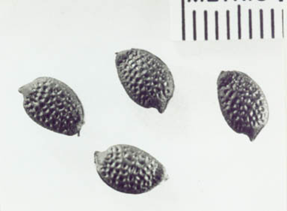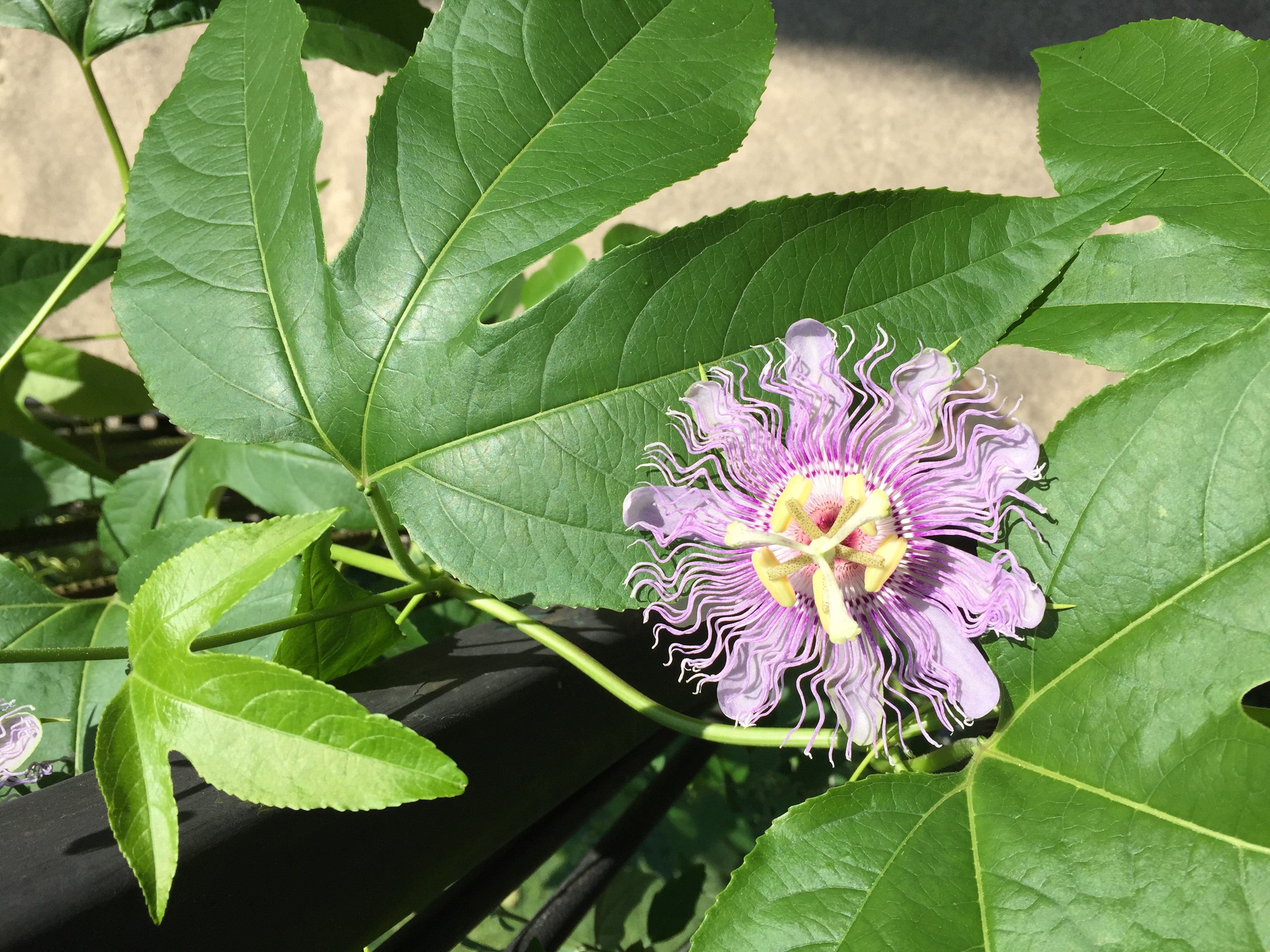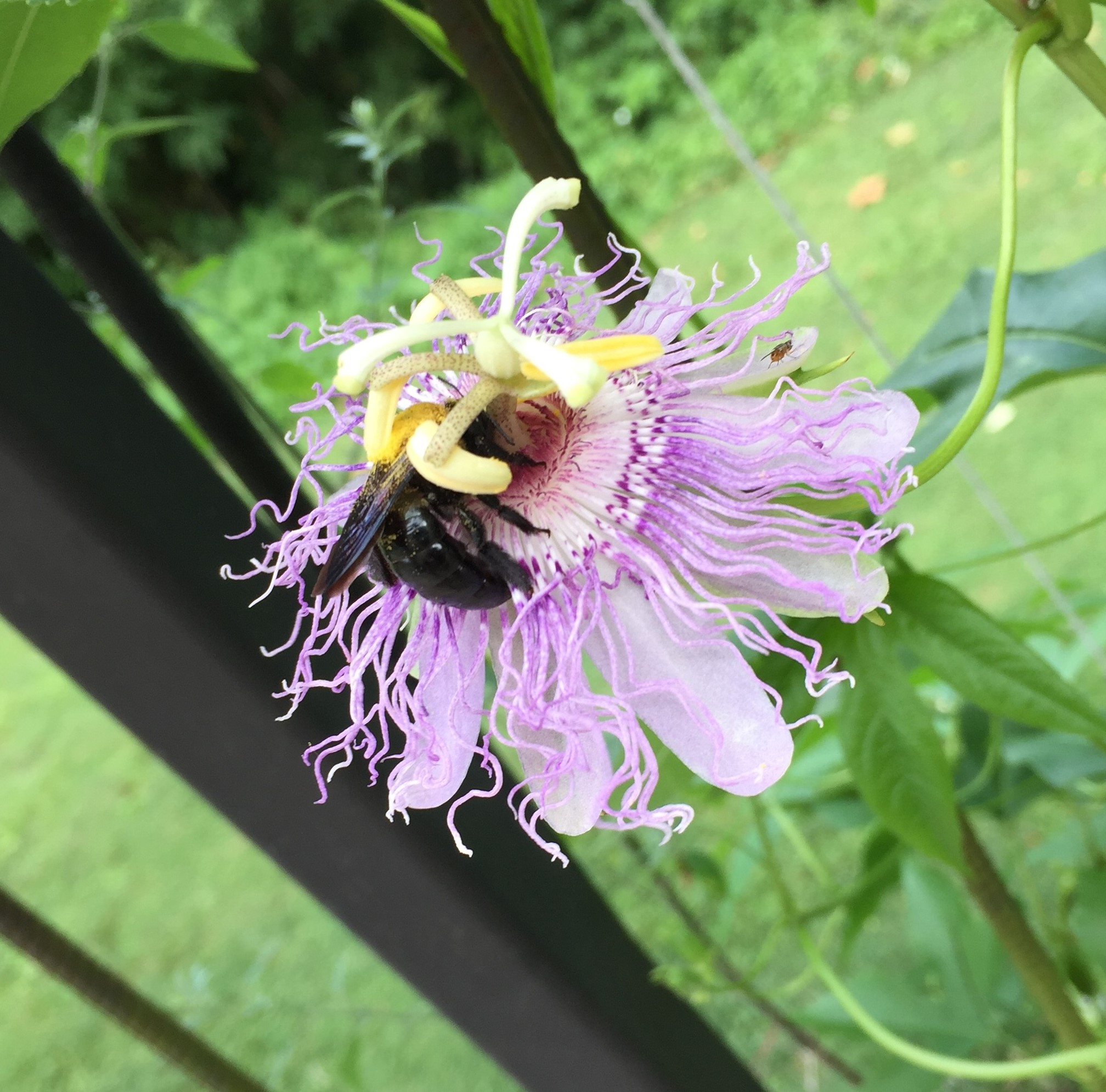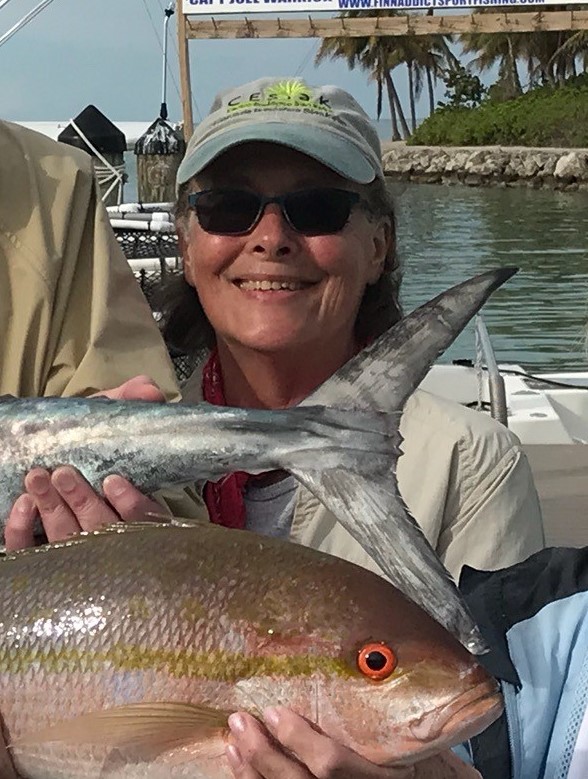Purple Passion Flower / Passiflora incarnata L. / Gayle Fritz
Purple Passion Flower
Passiflora incarnata L.
Gayle Fritz
Beauty, Food, and Medicine: The Amazing Purple Passion Flower
Astonishment is the typical reaction of most people who see purple passion flowers, also known as maypops, in full bloom for the first time. The showy blooms of Passiflora incarnata (Passifloraceae) are unlike any others native to the southeastern United States, and the species has been spreading in range and numbers for at least the past 3,000 to 4,000 years thanks to a mutualistic relationship with people. Its western range extends to eastern Texas, but I don’t remember seeing any as a child while growing up in the greater Dallas-Ft. Worth area. My earliest encounters were in North Carolina, where I attended graduate school. Charred, dimpled maypops seeds (Figure 1) were present in many of the archaeobotanical assemblages from Southeastern U.S. archaeological sites analyzed in Richard Yarnell’s paleoethnobotany lab at the University of North Carolina-Chapel Hill, and the flowering plants delighted my daughter and myself as we explored local wooded areas.

Figure 1. Seeds of modern Passiflora incarnata. Scale in mm. Photo courtesy of Gayle Fritz.
Fellow UNC student Kristen Gremillion published an article about maypops in 1989, highlighting the integral connectedness between Mississippian (CE 1000-1500) and early Colonial era (CE 1500-1700) Indigenous farmers and Passiflora incarnata, a species that defies our categories of “wild” and “domesticated”. Human seed dispersal and the creation of open landscapes, including agricultural fields, each contributed to the increasing abundance of a highly desirable source of food, drink, and medicine.
Early Spanish invaders and explorers in the Americas were struck by the appearance of the tropical Passiflora species they first encountered, giving them a name referencing the crucifixion of Jesus: a crown of thorns made up of radial filaments; ten sepals and petals that symbolize the faithful disciples, three upper stigmas representing nails; and five lower anthers signifying wounds (Figure 2) (Austin 2004:484). Maypops fruits are about the size of a chicken’s egg and are perfectly edible, but do not compete enough in flavor or texture to have become commercially successful in the United States. South American species such as P. edulis, however, are commonly used in foods and juices, and some are fermented into wines (Morton 2013). Many medicinal products have been made from compounds in passion flower plants: an internet search yields dozens of dietary supplements that are purchased to alleviate anxiety, sleep problems, and other ailments. Medical researchers continue to study the effects and efficacy of P. incarnata extracts (e.g. Elsas et al. 2010).

Figure 2. Purple passion flower blooming on my deck at home in Collinsville, IL. Photo by Gayle Fritz.
The many virtues of purple passion flower fruits were appreciated by Southeastern Native Americans, as recorded by early European naturalists and more recently by ethnographers. William Strachey (1572-1621), who served as secretary of the Jamestown Colony in 1612, observed “cart-loads” of passion fruits, which the Algonkians called maracocks, growing in crop fields in Virginia, where it “creepeth in a manner amongst the corne” (Major 1849:119, cited in Gremillion 1989). Cherokees ate the fruits raw or crushed them into a juice. Young shoots (see Figure 3) were boiled and fried, often mixed with other edible greens (Perry 1975). Cherokee people also knew medicinal purposes for pounded roots, including applications for skin problems, liver ailments, earaches, and to aid in weaning babies (Moerman 1998:379).

Figure 3. Young Passiflora incarnata vines growing in rooftop garden, Washington University in St. Louis, May 10, 2023.
Photo by Gayle Fritz.
Archaeobotanical samples from the Berry Site in western North Carolina were strikingly rich in maypops seeds, with higher counts and percentage of samples in which they were present than any assemblage I had worked on before (Fritz 2016). At this location in late December, 1566, Captain Juan Pardo managed to receive permission from a powerful chief for himself and 130 Iberian soldiers to build a fort and small settlement beside the Indigenous town of Joara in the Catawba River Valley. By providing gifts and military assistance to the leaders of Joara and allied communities, Pardo and his men enjoyed the local hospitality, but only for about 1.5 years. By June, 1568, an Indigenous revolt resulted in the burning of the fort and deaths of all but a few of Pardo’s men.
Why were there so many maypops seeds in the flotation samples from the Spanish compound, where Pardo’s men had been provisioned by Joaran women with maize and copious amounts of acorn- and hickory-nut-based dishes? These ingredients, along with the maypops, grapes, and other fruits, do not differ dramatically in kind from those recovered from nearby sites dating to same general time period, but I speculate that the young Iberians, most of whom were recent arrivals to the Americas, desired a source for making a sweet, fermentable liquid, or possibly even appreciated the sedative effects of passion flowers in the stressful frontier environment. Only three—all eventually married to Indigenous women—are known to have made their way to the Spanish coastal colony of Santa Elena after the revolt (Beck et al. 2016; Rodning et al. in press).
The latest stage of my relationship with the passion flower began three years ago when I joined a local community science project called Shutterbee. One hundred and eighty human residents of the greater St. Louis region and I conduct timed, photographic bee surveys of our own yards at least twice a month during the warm season and upload the images and data to iNaturalist, where one of the Shutterbee scientists or student assistants identifies these marvelous creatures or confirms or corrects the taxonomic information supplied by us amateurs. We are given periodic bee identification workshops and have been invited into a lab at St. Louis University for in-person training.
Because passion flowers attract bees, I started planting them at home, allowing the vines to grow up a trellis and twine to our back deck, which sits high above ground level. The flowers are especially loved by Eastern Carpenter bees, Xylocopa virginica (Figure 4), who occasionally even camp out overnight under the anthers and stigmas. A surprise bonus of close-up photography allowed me to observe that passion flowers have extra-floral nectaries on their nonflowering structures, attracting ants, flies, and butterflies. This is a rich and fascinating entanglement of species, brought together by one of the most multipurpose, beautiful, and downright astonishing plants I’ve ever known.

Figure 4. Eastern Carpenter Bee foraging on purple passion flower on my deck. Photo by Gayle Fritz.
Literature
Austin, Daniel F. 2004. Florida Ethnobotany. CRC Press, Boca Raton, FL.
Beck, Robin A., Christopher B. Rodning, and David G. Moore. 2016. Fort San Juan and the Limits of Empire: Colonialism and Household Practice at the Berry Site. University Press of Florida, Gainesville.
Elsas, S. M., D. J. Rossi, J. Raber, G. White, C. A. Seeley, W. L. Gregory, C. Mohr, T. Pfankuch, and A. Soumyanath. 2010. Passiflora incarnata L. (Passionflower) extracts elicit GABA currents in hippocampal neurons in vitro, and show anxiogenic and anticonvulsant effects in vivo, varying with extraction method. Phytomedicine 17(12):940-949.
Fritz, Gayle J. 2016. People, Plants, and Early Frontier Food. In Fort San Juan and the Limits of Empire: Colonialism and Household Practice at the Berry Site, by R. A. Beck, C. B. Rodning, and D. G. Moore, pp. 237-270. University Press of Florida, Gainesville.
Gremillion, Kristen J. 1989. The Development of a Mutualistic Relationship Between Humans and Maypops (Passiflora incarnata L.) in the Southeastern United States. Journal of Ethnobiology 9(2):135-155.
Major, R. H. 1849. The Historie of Travaile into Virginia Britannia, by William Strachey. London.
Moerman, Daniel E. 1998. Native American Ethnobotany. Timber Press, Portland, OR.
Morton, Julia F. 2013. Fruits of Warm Climates. Echo Point Books and Media, Brattleboro, VT.
Perry, Myra Jean. 1974. Food Uses of Wild Plants by Cherokee Indians. M.A. Thesis, University of Tennessee, Knoxville.
Rodning, Christopher B., Rachel V. Briggs, Robin A. Beck, Gayle J. Fritz, Heather A. Lapham, and David G. Moore. n.d. Women and Power at Joara, Cuenca, and Fort San Juan. In Mississippian Women, edited by Rachel V. Briggs, Michaelyn S. Harle, and Lynne P. Sullivan, in press. University Press of Florida, Gainesville.
About the author
 Gayle is professor emerita of anthropology at Washington University in St. Louis, and a past president of the Society for Economic Botany. She studies environmental archaeology, archaeobotany, and ethnobotany, with emphases on plant domestication, early farming societies, and shifts in foodways through time. Her fieldwork covers much of the southeastern and midwestern U.S., extending to the southwestern U.S. and northwestern Mexico. As former director of the Paleoethnobotany Laboratory at Washington University in St. Louis, she was privileged to train students and visiting scholars who now work across the globe.
Gayle is professor emerita of anthropology at Washington University in St. Louis, and a past president of the Society for Economic Botany. She studies environmental archaeology, archaeobotany, and ethnobotany, with emphases on plant domestication, early farming societies, and shifts in foodways through time. Her fieldwork covers much of the southeastern and midwestern U.S., extending to the southwestern U.S. and northwestern Mexico. As former director of the Paleoethnobotany Laboratory at Washington University in St. Louis, she was privileged to train students and visiting scholars who now work across the globe.
The Society for Ethnobotany is open to researchers, practitioners, and enthusiasts of ethnobotany and economic botany.
The 2026 SEB Annual Meeting will take place in Montpellier, France, from May 31-June 4th!
If you have an interest in ethnobotany or economic botany you can become a member of the Society for Ethnobotany.
If you are a member of the Society for Ethnobotany and would like to contribute a Favorite Plant please contact Blair Orr, blairorr@ymail.com. (Note: ymail, not gmail.)
